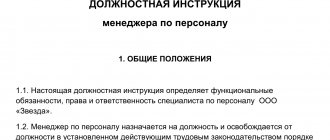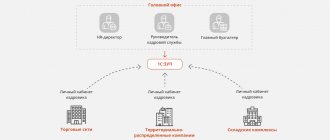Dilemma when forming personnel selection criteria
Recruitment specialists quite often face the following questions when choosing the main criteria for personnel selection:
- Should the selection process of candidates be based only on strong qualities or take into account the weaknesses of the applicant.
- What to put at the forefront - experience and professional knowledge or personal and leadership qualities of applicants.
- Give preference to candidates obtained through internal or external searches.
- To what extent should the factors of gender, age and education of the applicant be taken into account?
- Whether to hire a ready-made specialist or choose an applicant with potential for professional growth.
Specifics of mass recruitment
Mass recruitment.
An important difference between mass recruitment of candidates is that the recruiter needs to process all the resumes received and meet with a large number of people in a short time.
It is not always possible to do this through the HR department. In this case, it is recommended to seek the help of other departments of the company or recruiting agencies with the required specialization.
If you decide to use only an internal resource, you should enlist the support of a marketing specialist and employees of related departments.
Basic requirements for personnel selection criteria
The personnel selection criteria should be:
- justified (compliance of the stated duties with the work and personal qualities of the employee)
- filled (all characteristics and capabilities of the employee that contribute to effective work are considered)
- measurable (it should be possible to assess the required competence as objectively as possible and compare the results of several applicants for the position).
You should not inflate or overdo the selection criteria, otherwise this will lead to a narrowing of the pool of candidates or delays in hiring.
At the moment, as a rule, the main criteria for personnel selection are grouped around 4 topics: identifying professional and business qualities, assessing personality type, determining the ability to solve a problem in a non-standard way or self-learning, assessing previous experience and education.
An error in recruitment can lead to significant problems, the manifestation of which is not immediately apparent. Damage from a poor recruitment process can include:
- in low work capacity and productivity of new employees
- negative impact on the microclimate and relationships in the team
- loss of competitive position
- additional costs for training or a new search for a candidate
- time and material costs of dismissing an employee who cannot cope with his duties.
Alone, the HR department cannot always draw up the principles and criteria for personnel selection correctly, which leads to the selection of the wrong employee. To avoid mistakes in hiring personnel, to formulate HR selection criteria, you should attract the maximum number of highly qualified employees from the business so that everyone can contribute to the formation of requirements for a future colleague. The method of maximizing employee involvement in the interview process is called “ 360-degree selection .” He assumes that the entire circle of people who will work with the future employee (manager, colleagues, sometimes subordinates) will have the opportunity to interview applicants and express their opinion about the candidate’s strengths and weaknesses. It is believed that this approach makes it possible to objectify the screening process as much as possible and increase the chance that the newly hired person will fit more organically into the established team.
Typical recruitment criteria
Before starting the search for a suitable applicant, each employer determines all the necessary criteria that a future employee should ideally have. Based on them, the final candidate is selected. If you look at job advertisements, you will notice that in many enterprises the typical criteria for selecting personnel when hiring will often be:
- professional requirements (education, work experience)
- personal qualities
- personal requirements (gender, age, place of residence).
Let’s look at what specific hiring criteria employers prefer when choosing a new employee and why.
Experience and education. Perhaps, in most cases, the most important hiring criteria taken into account when searching for a new employee are education and work experience. Education is not valued for the piece of paper itself, as many people think, but this makes it clear to the employer that the candidate sitting opposite him has spent many years gaining knowledge and developing in his chosen field. When considering applications, everything is taken into account: basic education, additional courses, personal projects, participation in conferences. When choosing between two applicants with the same education, the job can be obtained by the one who has demonstrated in his resume the ability to constantly educate himself and develop professionally.
The main competition for a candidate with an education may be a person who already has extensive experience in the professional field. For example, two programmers get a job at a web development company. One of the candidates provides ready-made projects and can demonstrate to the employer what he is capable of, but at the same time does not really have any education. The other, on the contrary, has less practical experience, but is a certified specialist. In turn, it is easier for an employer to hire an employee with existing experience and knowledge of the job rather than relying on a newcomer in this field.
Business qualities and professional expertise. The level of these qualities is very often assessed in detail during an interview. The source of initial data on this will be the resume. Then, during the interview process, the candidate will have to demonstrate his knowledge in various ways and provide examples of its practical application. Testing tools that can be used to determine the professional suitability of an applicant include:
- professional interview with an expert
- test tasks or project work
- structured interview where the candidate will be asked to provide specific examples from the past
- solving business cases.
Some professions will require the applicant to present state-issued certificates of conformity or a license to practice a particular profession.
Personal qualities and values. When searching for an employee, an employer often focuses on the personal characteristics of the future employee. Firstly, they are important for assessing the alignment of a potential employee’s values with the company’s corporate culture. Secondly, factors such as emotional intelligence (EQ) and the ability to work in a team are an important component of success in many positions. Thirdly, assessing the leadership qualities of a candidate allows the company to predict the managerial potential of a new employee.
Personal requirements. This personnel selection criterion may include a wide range of requests. The most common requirements for vacancies will be gender, age, marital status, physical characteristics, and place of residence. It is these requirements that cause the greatest criticism in modern publications on the topic of effective recruitment and selection of personnel.
There are certainly positions for which such recruitment criteria are justified. Thus, when selecting candidates for the position of fitness trainer, the physical characteristics of the candidate are directly related to the productivity of his work. And when hiring between two applicants for a security guard position, clear priority will be given to more physically prepared applicants. However, in most cases, personal requirements are discriminatory and are merely a reflection of social stereotypes. For example, who said that it would be more rational to hire a female representative for a wedding accessories salon, and as for a weapons store, a sales assistant of the stronger sex would look better there. Why do 99% of job advertisements for assistant secretary require female gender and age?
The most common discrimination in selection for a vacant position is related to the age of the applicant. Many employers believe that candidates under 40 years of age are quite young, thus they are more purposeful and have a greater desire to work in order to climb the career ladder. And a fresh mind will always be in demand in a promising company. Other organizations, on the contrary, are more satisfied with hiring workers aged 30-50 years. They emphasize that the person already has work experience and will not have to be trained, and he will be less inclined to change employers.
A candidate's marital status is also associated with stereotypes, which tend to hit the female half of the candidate pool more strongly. It is believed that a job that requires constant business travel and unplanned meetings is better suited to a single candidate, but not to a married woman and mother of several children. Sometimes young married women do not get a position only because the employer assesses the high risk that the young woman will soon go on maternity leave, and she will again have to look for a replacement.
This kind of logic ultimately turns against the employer, since, following stereotypical thinking, formal criteria fail to discern the individual talent of a person, which means the chance to hire a great specialist is missed. In addition, it should be recalled that any form of selection of candidates based on personal characteristics is fraught with accusations of discrimination and litigation.
Mass recruitment stages
Some experts attribute mass recruitment more to marketing than to HR, because here you need to use sales tools and write an attractive advertisement. In large-scale recruiting, marketing concepts such as “hiring funnel”, “candidate avatar”, “advertising campaign” are used. But let's talk about everything in order.
Selection stages:
- Preparatory stage. It includes assessing the market, drawing up a candidate avatar, a media plan, and then posting a vacancy.
- Processing incoming responses.
- Interview.
- Training and internship.
Let's look at each stage of selection in more detail using the example of express delivery of documents and cargo "Flash". They already exist in big cities of Russia, and are now opening in 10 provinces. They need workers at delivery points who will register parcels, issue them to recipients, and process returns. This position does not require special knowledge or education. We just need responsible, attentive employees who are familiar with computers and are ready to learn quickly. HR and marketing specialists will work on the project.
Preparatory stage
In order for the selection to be effective, the Flash team of HR and marketing specialists begins work by assessing the local labor markets where new pick-up points will be opened. They define:
- approximate number of candidates on the market;
- level of competition (how many vacancies with similar conditions are posted);
- salary expectations of candidates;
- working conditions that are typical for the cities being studied.
To collect information, you can use open data, or you can conduct thorough market research. It is not profitable for our express delivery to conduct a whole study. Employees independently review job openings and resumes on recruiting sites to gather information.
Next, the Flash team moves on to creating the candidate’s avatar. Don't confuse this with a job profile. The avatar describes the ideal image of the employee: qualifications, character traits, motivation, interests, goals. This will help you write the vacancy correctly and build an advertising campaign, since the real needs of the candidates will be taken into account.
The specialists from our example make up several avatars. Their work may be of interest to students, women returning from maternity leave, and retirees.
The next step is developing a media plan. It specifies deadlines, methods (for example, HR technologies) and ways of working.
Marketers and HR specialists make up attractive vacancies for job seekers. In this they rely on the stages they have already completed: client avatar and market analysis. For each city, the level of payment differs, and for each avatar - the text of the advertisement.
Now the team decides where to post jobs. One or two recruiting sites will not be enough. The more ads posted, the more responses and the more choices. Therefore, specialists decide to automate the process. They find a service that posts vacancies on several sites at once and collects all responses in one place. HR staff can only log into their personal account and view the candidates’ resumes.
In addition to posting on recruiting sites, it is planned to advertise on social networks and print media, as well as use outdoor advertising. Before launching an advertising campaign, marketers calculate possible conversion and costs.
Processing incoming responses
When the first responses begin to arrive, HR review resumes and call those who are interested in them. They also “automated” this process: they created scripts.
Scripts are a list of questions that are arranged in a certain order. They help determine whether the applicant is suitable or not. For example, does the candidate have the necessary package of documents, what kind of work experience, is he ready for business trips, and so on.
It is important that applications are processed while they are “hot”. If you call the applicant a week later, he can already find another job. There weren't enough workers to call, so they hired three more recruiters. Two of them worked from Monday to Friday, and the third worked on weekends.
Note! For call processing services, you can contact the call center.
At this stage of selection, some candidates are already eliminated. The rest are invited for an interview.
Interview
The experts decided that conducting individual interviews would take a long time; first, they needed to select candidates. Therefore, they invite 10–15 people every day and gather them in one room.
To conduct a group interview, Flash employees prepared a special room in each city. It has soft chairs, a cooler, and candy. The room is decorated in light colors and creates a pleasant impression.
Initially, applicants undergo testing. The test helps compare the key characteristics of candidates, identifying skills and potential. Some organizations prefer training or games instead of tests. However, this is costly and not always justified.
After this, the employer makes a presentation of the company and the position. The presentation reflects working conditions, schedule, salary. Special time is devoted to the history of the organization and plans.
Note! If the applicant is not satisfied with the work schedule or location, but likes the organization itself, the atmosphere and friendly employers, then he will recommend the vacancy to his friends. So make sure you make a good impression.
The group interview ends with answers to questions from applicants. Here Flash’s HR staff collected and worked through typical questions and objections in advance.
At this stage, some more candidates are eliminated. The rest are invited to a personal interview.
Individual conversations do not take more than 15 minutes. The employer asks general questions and checks documents. If everything matches, the applicant is hired.
Note! A simple question: “Why do you need this job?” will say a lot about the applicant. Look not only at his words, but also at how he says them: calmly and confidently, hesitantly and hesitantly, or just trying to make a good impression.
Training and internship
HR hire workers for a two-week internship. During it, specialists train new personnel and watch how they work.
This is also where workers are eliminated. Some people found the work schedule difficult, while others simply couldn’t cope. Candidates who successfully complete the internship are officially employed.
The duration of the internship depends on the specific company. In our example, two weeks are enough to train and test the candidate. Sometimes you can do without an internship.
In some cases, organizations hire outside specialists to train staff.
Hiring funnel in mass recruiting
Using Flash express delivery as an example, we looked at how hiring funnels are created:
- An attractive advertisement is created. Let’s say 10 thousand people responded.
- Selection. In our example, this was telephone screening. As a rule, only 20% of candidates pass it - 8 thousand were eliminated.
- Interview. Of the two thousand invited candidates, 20–25% will not come to the interview, and 60–70% will drop out during the interview. In total, about 300–400 people remain.
- Internship. Here another 5–10% will be eliminated.
- Employment of employees who have successfully completed all stages.
These are approximate figures. Each individual case will have its own statistics. Thus, out of a thousand applicants for a vacancy, about 5% will actually be hired. Therefore, do not be afraid of large flows of responses; place your ad wherever you can.
Current trends in the formation of personnel selection criteria
The development of the economy, where added value is generated through the creation of a high-tech and innovative product, makes adjustments to the methods, principles and criteria for personnel selection. Among the current trends in recruitment it is worth noting:
- Mixing the emphasis from professional to personal qualities of candidates. Selecting employees based on personality type rather than just work experience.
- Striving to evaluate applicants not on their basic credentials, but on their ability to continually learn and improve.
- Development of methods for assessing candidates’ capabilities to demonstrate a non-standard approach to problem solving and innovative thinking.
- Equal attention in selection to the factors IQ (intelligence quotient) and EQ (emotional intelligence).
- Maximum algorithmization of personnel selection criteria for mass hiring in order to use computer search and selection.
- Digital reputation. Active use of social network data as a source of alternative information about the applicant.
Thus, recruitment criteria can be modern or traditional, individual or algorithmic. The most important thing is that they are relevant to your business development strategy and allow you to correctly filter the talent you need among applicants.










